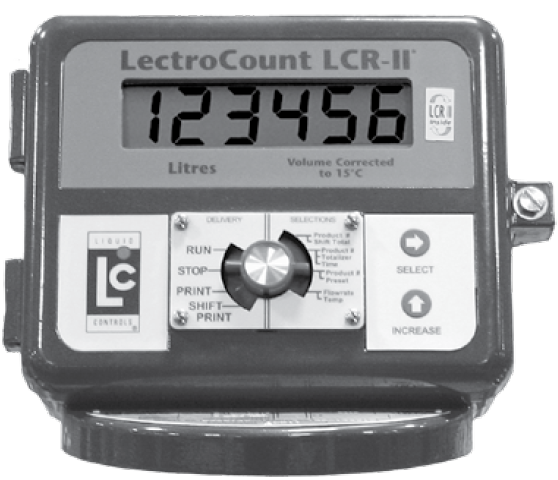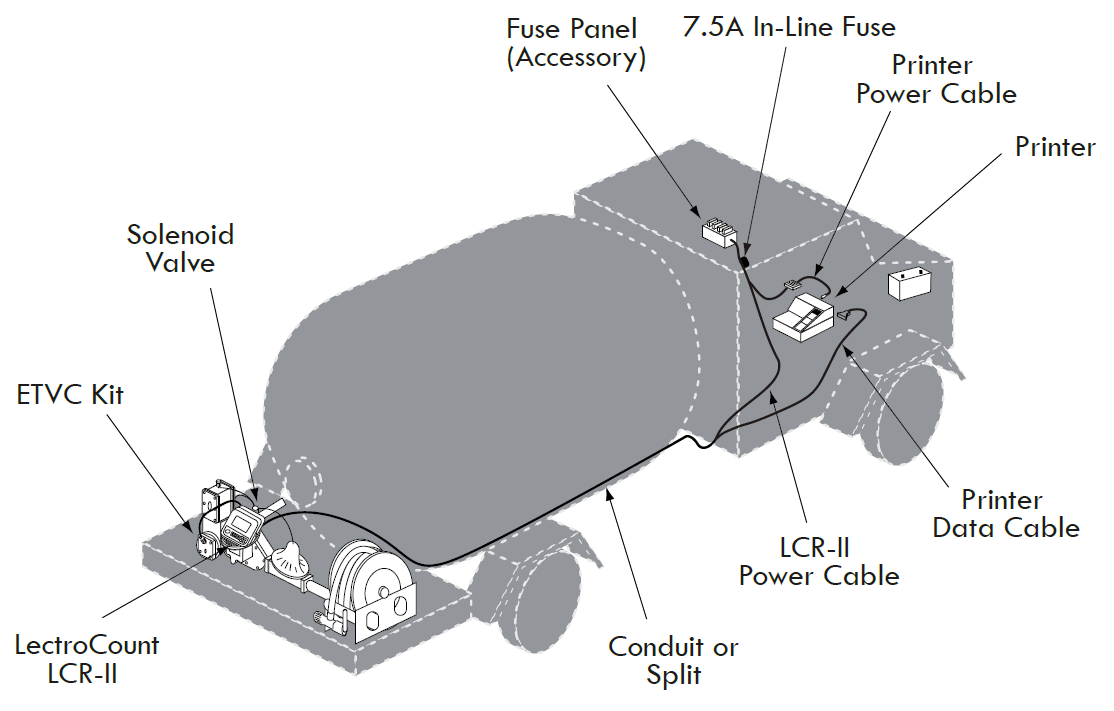Data and Power Cable
The LCR-II shipment typically includes a gray 40-foot power cable and a 40-foot black data cable, prewired to terminal blocks on the LCR-II CPU board. On typical truck installations, the cables must be routed from the back of the truck–where the LCR-II is installed–to the front of the truck, where the accessory panel is and the printer is typically installed. The black data cable connects to the printer, typically mounted in the truck cab. The gray power cable hooks up to a power source. During installation, follow these guidelines and ensure the cables remain undamaged.

Guidelines for routing the data and power cables on the outside of the truck
•LC recommends that both cables be run through ¾" automotive plastic corrugated split loom or through flexible liquid-tight conduit for protection.
•Make sure the loom or conduit runs down the inside edge of the trucks frame rail and fasten every 2' with cable ties.
•Install rubber grommets to protect the cables where they pass through the cab wall, meter box, et cetera.
•Keep the cables away from heat sources such as the engine exhaust, manifold, exhaust pipe, mufflers, et cetera.
•If the cable glands are removed from the register, apply pipe sealant or PTFE tape on the gland threads before re-installing.
•Keep cables away from moving suspension components and other moving truck components.
•If the cables are shortened, ensure that you use the proper tool for stripping off the insulation on the cables.
•Make sure cables are connected to the proper terminal.
Guidelines for routing the data and power cables inside the cab
•Before you begin, layout positions for the component and pathways for the cable.
•Ensure that the printer and the wires will not obstruct other vehicle components.
•Keep cable pathways away from heavy traffic areas and locations where they may be vulnerable to damage.
•Remember to provide plenty of room around the components, so the cables can be easily connected.
•Avoid installing the cable where it will be exposed to excessive flexing.
•Ensure that cables are not pulled too tight in areas that will move. For example, when wiring cab-over trucks, leave enough slack so the cab can be tilted without damaging the cable.
•Ensure cables are not fastened to adjustable seats.
